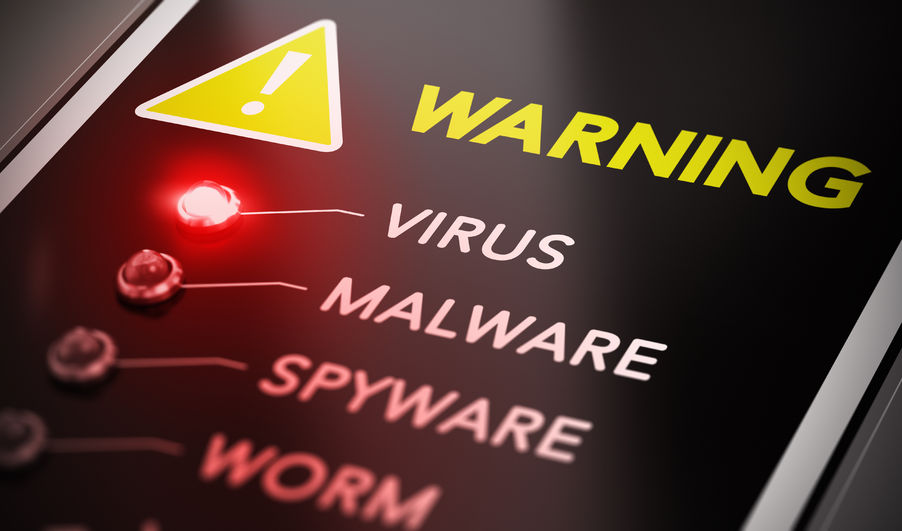Each time you go online, your information and privacy are at risk. Hackers are seeking to take over your email account, expose your credentials, steal your personal data, your home address, and your Social Security number. They want to remotely enslave your computer, infect your smart appliances and peep through your webcams.
In every crevice of the web, they lay their cyber traps as they try to find back doors and vulnerabilities they can exploit, waiting for that opportune moment you slip, letting them through.
Of course, there are various ways to protect yourself. But where do you start? Don’t worry, we’re here to help. Here are 10 things you can do now to be more secure online:
1. Secure your phone before letting anyone borrow it
There are times when a friend or your kid wants to borrow your phone to check out an app or quickly look something up online. With all the personal information we keep on our smartphones. it’s not surprising that you are hesitant about handing you gadget readily.
But don’t fret, if sharing is a must, there are ways you can let them into your phone without sharing all of your private information.
Android Guest Mode
Most up-to-date Android smartphones let you get at the Guest Mode feature by pulling down from the top. Touch your user icon in the upper right-hand corner, then tap it again to access the “User” screen. You should see your own profile along with the option to “Add guest.” Click on that and the phone will switch into Guest Mode.
Guest Mode allows the user access to just the basic phone functions, like the Chrome browser, but hides your contacts, internet history, and personal data. You can switch back to your regular profile through the same method you used to turn on Guest Mode.
iOS Guided Access
On iOS, one very useful setting is Guided Access. This feature essentially locks your iPhone or iPad in a single app and it will require a passcode, Touch ID or Face ID to exit out from it. This is great when a you want a friend to check out one particular app on your gadget and nothing else.
To turn on Guided Access, open Settings >> General >> Accessibility, scroll down then tap Guided Access. Toggle it to on and set a Passcode (or activate Touch ID or Face ID).
To start Guided Access to lock your iOS gadget into a single app, just triple-tap the Home button (or the side button on an iPhone X) while the app is open. To exit out of the app, triple tap the Home or side button again.
2. Control permissions on your apps
Before you install apps, you should always check the permissions they will require on their Google Play or Apple App Store app page. Android phones will also give you a rundown of the permission requests upon installation of an app. iOS apps will typically show you a permission access pop-up upon using a feature that requires specific access to your gadget.
Sometimes apps ask for more information than they really need. That information can then be sent to companies who might use it for advertising. Or it might just sit on their server waiting for a data breach to put it in hackers’ hands.
This is why checking your app permissions regularly is good practice. Not only will it give you more privacy control and stop apps from potentially from spying and abusing your trust, it can also weed out apps that are constantly running in the background, which can, in turn, improve your gadget’s battery life.
Fortunately, checking app permissions is not that hard.
3. Make sure to protect all your accounts
Most major services and companies, such as Google, Facebook, Microsoft and Apple, offer this extra layer of protection when you log in to your accounts.
It’s called two-factor authentication (2FA). Don’t let this fancy name throw you off. It just means that to log in to your account you need two ways to prove you are who you say you are. It’s like the bank or DMV asking for two forms of ID. The idea is that a hacker is going to have a much harder time getting both forms of ID, and it’s true.
You can set up 2FA to send you a special code via email or text instant alerts when your account is accessed from an unfamiliar device or location. Usually, this is because you’re logging into your email account from an internet café in London, or you’re checking your bank balance on a trusted friend’s phone.
Other times, it’s a hacker who is trying to figure out your credentials. You will receive a notification by email or text saying that there was a login from an unrecognized machine or someone asked to reset your password. The login will not be authorized or the password reset without having the special code included in the email or text.
4. Permanently delete files from all of your devices
When you delete a file on your PC, or on a Mac, by sending it to the “Trash,” it’s easy to assume that the file is gone forever. But really, it’s just been sent to another place.
Just like a physical trash can, the contents of your PC’s Recycle Bin or Mac’s Trash Can are only cleared out when you empty them. Using the same analogy, if it’s been a while since you’ve emptied them, there’s a treasure trove of documents and items for someone to snoop through.
And, if you haven’t properly shredded private documents, they can still be found later on down the road. All those deleted letters, financial documents and compromising photos are still lurking on the computer. All it takes is a little know-how to recover them.
If you want to get serious about your personal security, you need to erase sensitive data for good.
5. Keep strangers off of your Wi-Fi
People love to mooch Wi-Fi. They don’t mean any harm. They just find an unprotected signal and sign on. Why not? It’s free, and nobody will even know. Your neighbor won’t mind if you steal a little broadband to watch Netflix, right?
But criminals also love unsecured Wi-Fi, and they do mean harm. They use your network to attack your gadgets and steal your personal information. They download illegal files through your router, making you vulnerable to a police investigation. To add insult to injury, intruders slow down your connection, causing buffering, and making it harder for you to finish online tasks.
How do you protect your Wi-Fi network against random attacks and unauthorized access?
6. Protect your inbox from phishing scams
Phishing emails are frightening and annoying. They flood our inboxes, hoping to catch us off guard so that we’ll fall for their tricks and hand over our private information. It seems like a never-ending battle against these hordes of scammers.
It is a concern we deal with on a daily basis. This masquerade of fake links and spoofs that make us hopeful, when all they desire are our credit card numbers, personal data or usernames and passwords to SomeSite.com.
In order to stay protected from these seriously scary scams, you need to know what to look for.
7. Back up all of your data
Like most people nowadays, you probably juggle multiple gadgets on a regular basis. You access important files on your office computer or laptop, take family photos and videos with your smartphone, type multiple documents on your tablet and possess maybe an entire media library on your home computer.
Now, think about all this data you can’t risk losing. With all of those gadgets, just think about how much data you’re creating on a daily basis. Files you may not even realize are important until disaster strikes.
All it would take is one nasty virus or a hardware failure, and you could lose it all. Even something as simple as losing your device, or having water damage that makes your device inoperable. This is why backing up your critical data is so important.
8. Keep trolls off your Facebook with one click
Do you keep getting nasty comments or spammy messages from random strangers on Facebook? Maybe they’re scrolling through your timeline and dropping inappropriate language on your past posts. Yep, that’s not only creepy, it’s an invasion of your privacy.
Luckily, there’s a little trick you can use to limit the content the public can see. Facebook provides a way to lock down your Timeline and retroactively change the privacy settings of your past posts quickly with one click.
With this simple trick, you can lock out non-friends from seeing all your past posts. These could be party photos from yesteryears, angry rants, old philosophical or political musings or personal associates you no longer want the whole world to know about.
9. Erase your browser history
In this age of personalized ads and online user profiling, we are understandably concerned about the digital tracks we are leaving behind. Your browsing and search habits get collected, cataloged, analyzed and you become a statistic – an alphanumeric code to be processed by an algorithm.
The “personal” in personalized ads is actually quite an impersonal process – your details are just data bits and pieces that get crunched to make marketing more efficient.
For a clean slate, clear all your browsing data, history, cache and cookies from your web browsers then disable or limit tracking on your gadget or even services like Facebook. Make sure you delete all third-party advertising cookies too.
10. Get rid of damaging malware and viruses
Have you ever wondered if you have hidden malicious software lurking within your computer? Maybe at times it is abnormally sluggish, constantly freezing, or you feel that something just doesn’t feel right.
If you start noticing some of these symptoms, your gadget may very well be infected with malware or viruses. Removing said malware should be your top priority.



